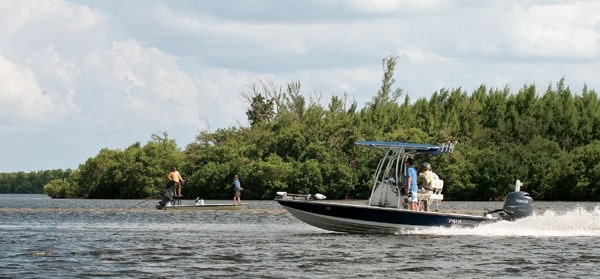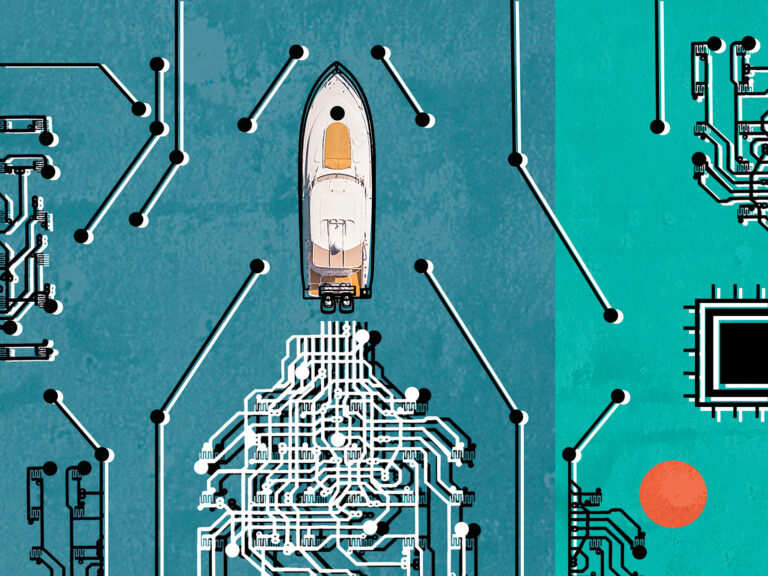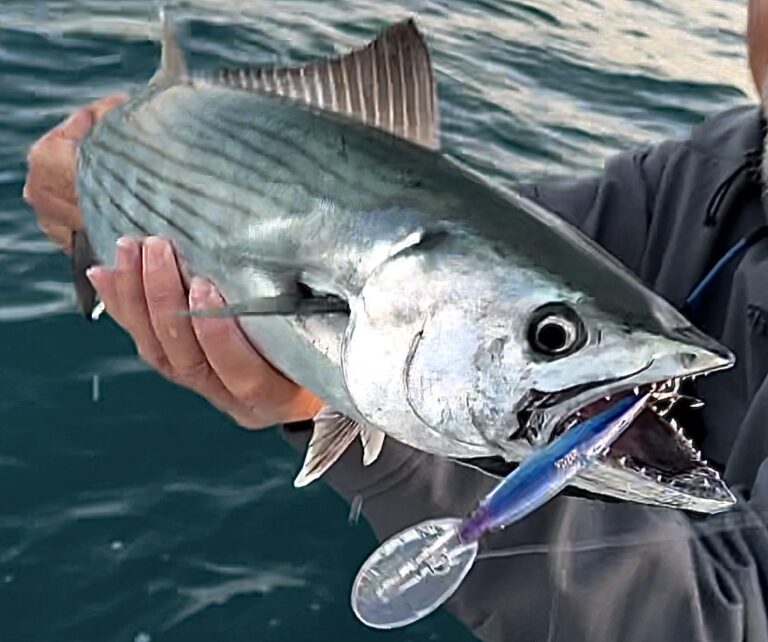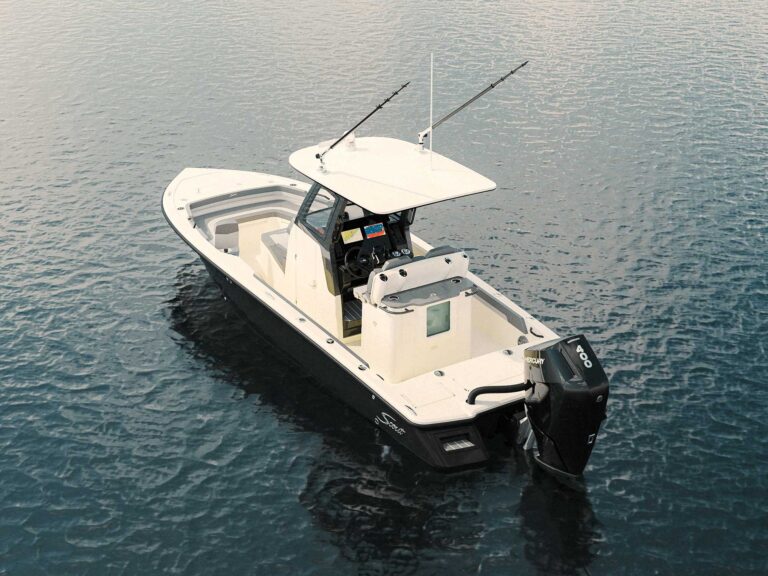
Like a pesky mosquito that wouldn’t go away, the high-pitched whine of a small outboard drew steadily closer. With my engine clearly out of the water, I was atop the platform, poling the boat 30 yards off the shoreline. My buddy was on the bow, casting to redfish cruising the grass. From around the nearby point, a small johnboat with one guy aboard suddenly appeared. The water was calm and there were no hazards seaward, yet the johnboat cut between us and the shore. As I raised my arms in disbelief, the interloper glared at me and continued running down the coast. The reds scattered, and one of my prime spots was ruined for that tide. Unfortunately, similar incidents are being repeated with ever-increasing frequency.
From Massachusetts’ Monomoy Flats to Texas’ Laguna Madre, shallow-water fishing is increasingly popular. Management success stories for species like redfish and striped bass are certainly a driving force. But the economic downturn, higher fuel prices, reduced bag limits and closures offshore have forced many anglers onto the flats. This growing pressure is not only impacting the fish but also leading to more conflicts between anglers. Most problems can be avoided, however, by following a few simple rules.
**Don’t Buzz the Fish
**One of the Greatest sins in flats fishing is running over fish with the boat on plane. Buzz the bars, flats and shorelines where fish seek sanctuary or feed often enough, and they’ll go elsewhere.
“I run only in the middle of the main channels and stay as far away from the shoreline as possible,” says Capt. Travis Holeman, a 10-year veteran of the Louisiana marsh and inshore tournaments (holemanbrothers.com). “If I do go in close, I’m either on the trolling motor or, better still, the push pole. And I always ease out of ponds before cranking the big motor. These fish are getting a lot more pressure, which makes them harder to catch.”
**Get There First
**Jockeying for prime position is one of the biggest complaints of professional guides and recreational anglers alike. It’s considered rude to jump in front of another boat fishing a flat or on a drift. Skiffs are routinely positioned with the sun and wind to the stern to maximize sight-fishing opportunities.
“My rule is the early bird gets the worm,” says Capt. Scott Owens, a fly and light-tackle guide who works Georgia and north Florida coastal waters (captainscottowens.com). “If you get to a spot first, that’s your spot. Other boats shouldn’t barge in. If you show up and someone is there already, go somewhere else, and next time get started earlier. Chances are, that next spot will be as good or even better, or you might just learn a new spot.”
**Gain Local Knowledge
**Before exploring a new area, learn the local customs and protocol. Magazine articles, chat rooms, fishing clubs and tackle shops are great sources of information on where and how to fish a new spot. If there are other boats nearby, observe from a distance or try to raise them on the radio to make sure you’re not cutting off their fish. Knowledge and simple communication often help prevent conflicts.
“There are places in the Keys, especially oceanside, where you can ease up to another boat tarpon fishing and not cause a problem, if you know which way the fish are swimming,” says Capt. Tad Burke, a 24-year pro and commodore of the Florida Keys Fishing Guides Association (thewildsideguides.com). “The key is local knowledge. On the other hand, if I’m fishing for bonefish, I don’t want anyone else coming close. I often pole back and forth, waiting for fish to move out of channels or lakes to feed, and I don’t want someone crowding me. Learn the local nuances beforehand, and you’re less apt to cause a problem.”
**Allow Buffer Zones
**Unless you’re teamed up with another boat, it’s always prudent to maintain considerable distance from other craft. Depending on the flat, up to a mile of separation is not unusual.
“In Louisiana, there is absolutely no reason for any two boats to be working the same pond,” Holeman explains. “There are just too many other good places available. That’s not always the case in more crowded areas, like Florida. My rule is if I can tell who you are or see the whites of your eyes, you’re too close. Back off or go to another spot, please, and I’ll do the same for you.”
**Give a Wide Berth
**If you’re flats fishing from a boat and come up on anglers wading or fishing from docks or piers, give them a wide berth. You are mobile; they are not. Go to another flat.
**Follow the Golden Rule
**”Unfortunately, there’s a lot more hostility on the water these days,” Burke says. “People are ignorant or just don’t care. But confrontations are 99 percent useless. You get upset, the offender usually cops an attitude, and nothing is solved. So when I encounter a problem, I just go somewhere else. It’s not worth the hassle, and I’m not going to let it ruin my day.”
“If people would just use common sense and courtesy, there wouldn’t be nearly as many problems,” Owens adds. “I try to be nice to everyone and hope other anglers reciprocate.”
***
Tipping Guide(s)
Etiquette also comes into play in the client-guide relationship. For example, it’s still a common practice in many areas for clients to provide the guide’s lunch. Tipping is another long-standing, albeit optional, custom. Charter fees are considered salary for these self-employed proprietors, while tips help defray costs like fuel, oil and bait. The amount of tips varies.
“Normally I get $50 per head,” Holeman says. “Tips are not expected, but they are certainly appreciated.”
“I provide a service like a waiter in a nice restaurant,” Owens explains. “I try my best to make sure everything goes right. If I get a 10 percent tip, I feel like I did something wrong. If we’ve had a good day, I usually get 15 percent. Any more than that, we had a great day. Some of my best customers don’t tip me, but they do book me all the time. So tip whatever you’re comfortable with giving.”
“Gratuities shouldn’t be based only on catching fish,” Burke adds. “Clients should ask themselves if the guide helped their casting or taught them a new technique. Did he make an extra effort in difficult conditions? Was he professional and did he provide positive feedback? Was he good with your wife or kids? I get tips ranging from $50 to $150 based on those factors, not just the fish we caught.”









